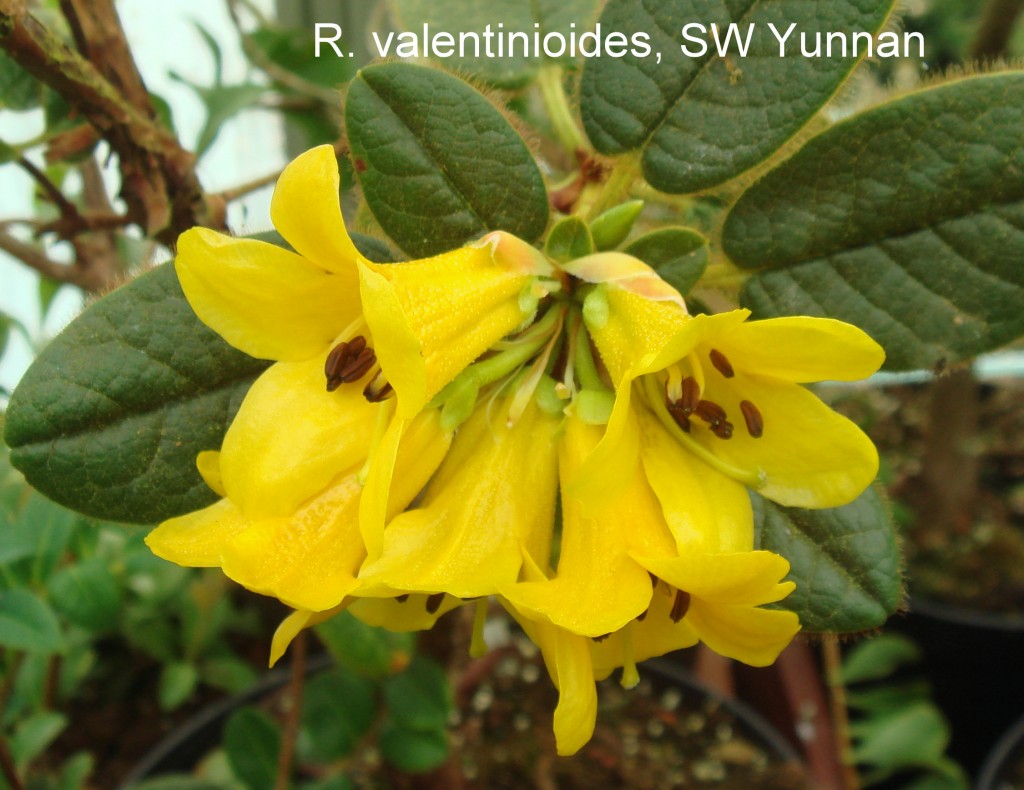Rhododendron valentinioides SEH#235
This species was first collected and introduced into cultivation from the Laojun Shan, a range of mountains near the city of Wenshan in southern Yunnan Province, China, just north of the Vietnam border. Peter Cox and I were on our very last day in the field at the end of a very successful five-week expedition to Sichuan and Yunnan in the autumn of 1995. There were numerous specimens of this rhododendron growing epiphytically in the surrounding forest and on rocks and exposed road cuts at around 9,000 ft. (2800m). We were told by our Chinese host, a botanist from the Kunming Institute of Botany, that it was R. valentinianum, a species we knew to be native far to the west along the Yunnan/Burma frontier in the mountains along the Salween River. It was obviously not that species, being much larger in all of its parts and with very bullate foliage and an upright (vs. mounding) habit. We called it “R. valentinianum affinity.”
Now quite widely distributed in cultivation, this beautiful dwarf species has among the deepest yellow flowers of any rhododendron. In addition, it has smooth and peeling bark and very ornamental hairy foliage. Coming from such a southern latitude, this species (a member of subsection Maddenia, a notoriously tender but beautiful group of species) is remarkably tolerant of cold temperatures, surviving an unseasonal plunge to 11F in November of 2010 with no damage in one of the coldest parts of the RSBG.
In its limited native habitat, this species was growing in association with Acer spp., various evergreen oaks, Gaultheria forrestii, and the Rhododendron species, serotinum and sinofalconeri, both of which were also introduced from this expedition in their Chinese forms; whereas the forms of these species from N Vietnam, just across the major barrier of the Red River and quite different in appearance, were introduced a couple of years earlier from that isolated region).
Another very exciting find and introduction from this rich area was the hardy tree araliad, Schefflera fengii, a fifteen-foot specimen which can be seen near the pond in the RSBG.

